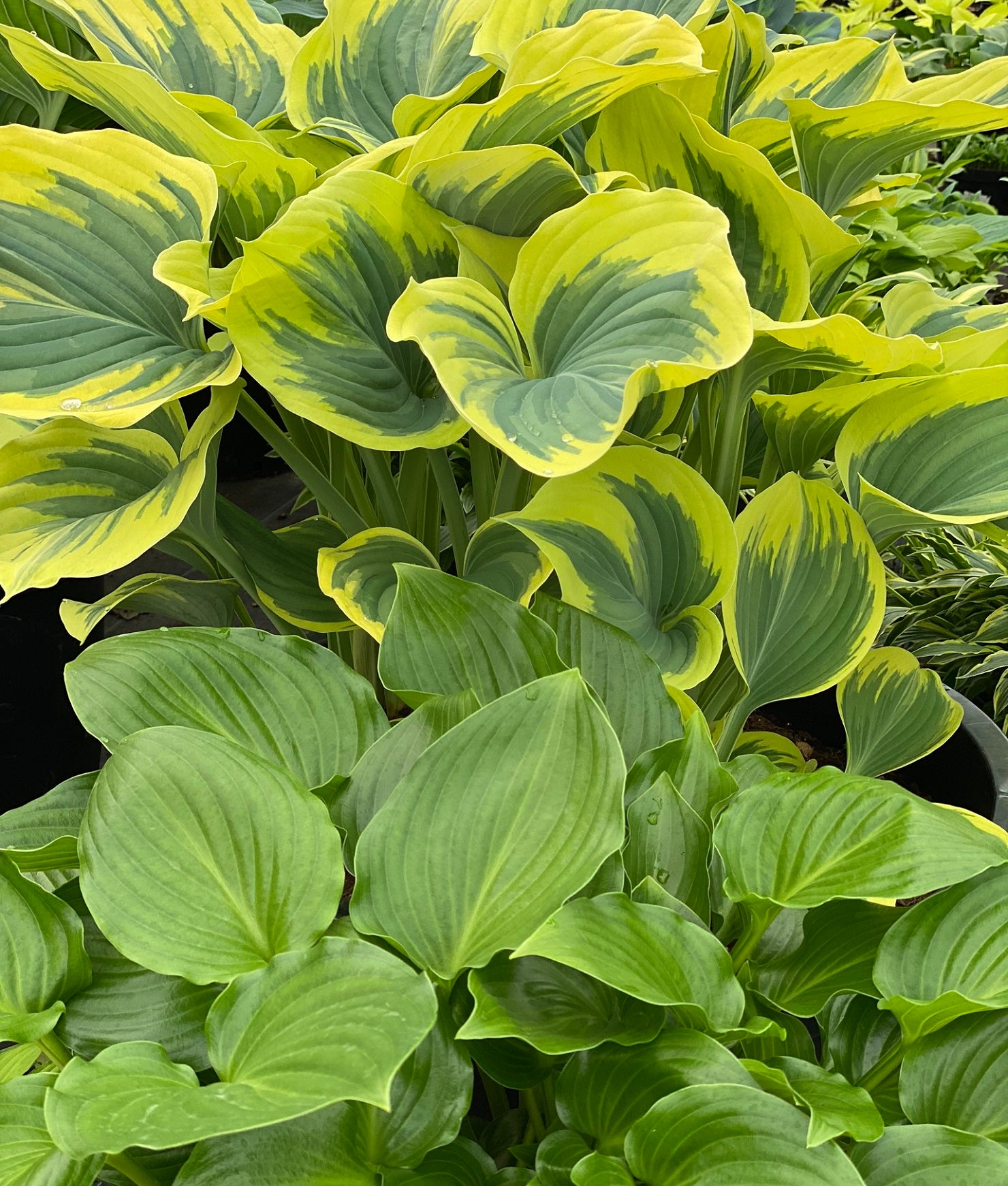
If you're new to growing hostas, there are a few things that are worth knowing to help you grow your plants to their best. Here is a simple guide to help you start your hosta addiction!
What are hostas?
Hostas are hardy shade perennials that are predominantly grown for their foliage, however, many have stunning flowers some of which are fragrant. One of the main appeals with hostas is the shear range of shapes, colours and sizes that are now available. Here at the Sienna Hosta we have over 1000 different varieties from monstrous giants like 'Kingsize' and 'Empress Wu' that reach over 2m in diameter, to the tiny miniature varieties like 'Cracker Crumbs' and 'Country Mouse' that are no bigger than 30cm across.
Hostas originate from Asia, but more of the modern varieties have been introduced from Europe and the USA. There are thousands of varieties available and new ones being released every year.
Are hostas evergreen?
We really wish hostas were evergreen, but unfortunately there are no varieties that are. All hostas will die back around October/November and remain dormant throughout the Winter. At the start of Spring you will see buds (also known as eyes) poking through the soil around March/April. Different varieties will appear at different times, some later than others.
Can hostas grow in pots?
Hostas can be grown both in pots and in the ground. Some varieties actually do better in pots, especially the miniatures as you are able to control the amount of water they get. It is important to ensure you provide good drainage. Check out our Growing Hostas In Pots and Containers for more advice.
What soil should you use to plant hostas?
Hostas are not fussy, but a mix of 50% of general purpose & 50% John Innes No.3 is ideal. Mixing grit will help with drainage so that you plant don't become too wet. When planting into the ground, add fresh compost to the soil and turn well with a garden fork to ensure the soil is loose to aid good root growth.
Can you plant hostas in full sun or full shade?
Hostas are extremely versatile and will grow in all light levels. The ideal position for almost all hostas is dappled shade, under the canopy of a tree or sheltered by large shrubs for example. If you would like to plant in a position which is either very dense shade or open to full sun then it is important to choose an appropriate variety for the position. A very general rule is that the more yellow varieties will take more sun and the more blue varieties will do better with more shade. See our Sun Tolerant Hostas and Planting Hostas in Deep Shade sections to find the right variety for you!
How often should you water hostas?
It is a common misconception that hostas require a lot of water, this leads to many people overwatering and killing their new plants. The ideal moisture level for hostas is just slightly on the damp side. Hostas are surprisingly tolerant and can go several days without water unless it is particularly hot. The important thing is to check the soil prior to watering and if its damp then adjust your watering accordingly.
If you think you have overwatered your pots and the soil has started to stagnate, the best option is to remove the plants and replenish with fresh soil. This is usually quicker trying to rescue a dying plant in bad soil.
Should you feed hostas?
Although hostas don't require feeding they will certainly appreciate a feed every now and then. We feed plants on the nursery with a high nitrogen feed which you can order with your plants here. It is important not to use a high potash feed if you are looking for healthy leaves as this will only benefit the flowers.
What pest do hostas have?
The main pest to hostas is the slugs and snails. Hostas are one of their favourite treats and this can be frustrating to any new hosta grower. You can control these affectively with garlic wash, this is what we use on the nursery to avoid using pellets. For our garlic wash recipe please click here.
Vine Weevil can also damage plants but this is less common. Adult vine weevils will eat semi-circular notches from the edges of the leaves and lay their larvae in the crown of the plant. When these larvae hatch they cause more damage by eating the roots, this can be enough to kill young plants. If you notice the notching on the edge of the leaves in the summer, then using nematodes in the autumn is advisable to avoid larvae damage.
Hosta will also be eaten by deer and rabbits if not protected. We have more information on hosta pests here.